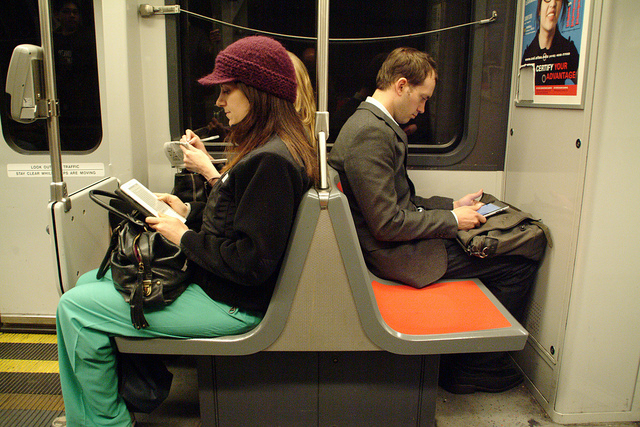Audiences want news on their computers, their tablets and their mobile phones and are finally beginning to show a willingness to pay for it, according to a new report on digital news.
The report by the Reuters Institute for the Study of Journalism, part of the European Journalist Observatory network, shows that the demand for good quality journalism remains high and trusted news organisations tend to fare better in the digital world.
This is the second Digital News Report published by Reuters Institute and researchers were able to make year on year comparisons. The report surveyed 11,000 internet users in nine countries including the UK, Germany, Brazil, the US and Japan. This research was conducted by polling company YouGov using an online questionnaire at the end of January/beginning of February 2013. The data was weighted to targets set on age and gender, region, newspaper readership, and social grade to reflect the total population of each country.
Just over one in ten (11%) of online users of all ages who participated in the survey said they had paid for news in the last year – about one third higher than the average in the 2012 survey.
The report says that this rapid increase can be partly explained by the relatively low starting base, but it highlights significant growth in the percentage of consumers who have paid for digital news in countries such as the UK, France, Germany, and US.
The report identifies 25-34 year olds as the age group most willing to pay for online news across all nine countries surveyed
Of those who are not currently paying, across all the countries more than one in ten (14%), on average, said they were ‘very likely’, or ‘somewhat likely’, to pay for digital news in the future.
While half (50%) of the global sample, on average, said they had bought a printed newspaper in the last week, only 5% said they had paid for digital news within the same period.
In the United States, smartphone and tablet users are significantly more likely to pay than other online news users. The report did not see the same device impact in the UK where the eco-system around paid news is less developed and there are a large number of high quality free news apps in the market.
All four of the countries surveyed for the first time in 2013 show higher percentages of people who have paid for digital news in the last year – with Brazil (24%) and Italy (21%) leading the way. Italy and Spain’s figures are largely driven by one-off payments for apps and articles while the US and Denmark statistics are more fuelled by ongoing digital subscription.
The devices on which audiences receive news is also changing.
Tablet usage has doubled in the 10 months since the last survey in those countries covered in both 2012 and 2013. Weekly news use has risen from 8% to 16% of the UK sample and from 13% to 25% in Denmark.
While the computer remains the primary device for accessing digital news, the key underlying trend is about growth in access from multiple devices. One-third of the entire global sample now gets news on at least two devices and 9% use more than three.
Some devices are used more heavily for news than others. 85% of computer users say they access news on that device each week, compared with 63% of smartphone users, 60% of tablet users, 54% of smart TV users, and only 17% for the e-reader.
Digital may be impacting traditional platforms but it is not yet replacing them. For most people digital news is extending the range of options available.
Despite the general growth of online and multi-platform news, the report finds that a sizeable minority is sticking with traditional platforms such as TV, radio, and print, particularly in Germany and France.
Most of the Germans and French surveyed said that although they are connected online, they prefer traditional media. Nearly 6 out of 10 (55%) Germans said they read newspapers each week, while most French respondents relied on TV and radio for news.
By contrast, the Japanese and Americans were the most likely of the countries studied to use the non-traditional news sites and online aggregators. Meanwhile, Brazilians living in towns and cities favoured social media (47%) as a source of news.
The survey also shows surprising national differences in the rate of online participation. The Spanish (27%), Italians (26%), and Americans (21%) were more than twice as likely to comment on a news story via a social network as the British (10%).
Meanwhile urban Brazilians were five times more likely to comment on a news site than the Germans or Japanese surveyed, and nearly half (44%) shared a news story on a weekly basis via a social network, with around one third (32%) doing so by email.
A recent innovation has been the development of live blogs as a way of covering breaking news and sports stories. More than one third (35%) of the Japanese surveyed used these live pages at least once a week with the French (19%), Italians (16%) and Spanish (16%) also enthusiastic.
Only 8% of the Danish and German respondents accessed live blogs, preferring to read longer articles (40% and 47% respectively).
The survey also reveals that for many, the mobile phone is the main way of accessing news when we are on the move.
In Denmark, people using public transport are twice as likely to get the news on their mobile phone (63%) than read a printed newspaper (33%); while in the UK, on public transport almost half (48%) of those surveyed said they used their mobile phones for news, with one third (34%) preferring to read newspapers and 6% using tablets.
In contrast, the computer dominates news use in the office and the radio remains king for those travelling by car.
The report also looked at gatekeepers – the sites by which audiences access the news in different countries. In France and Germany, search engines are the most important gateway – used about twice as often as in the UK. In Brazil, social media are the top-ranked gateway for the urban-based online sample (60% said it was one of the five most important ways of finding news). The same is true in Spain (45% social media compared with 40% for search). Japanese consumers, by contrast, are more likely to get news from aggregators and portals, followed by search engines.
Facebook, Google, Apple, and Amazon now have a significant and growing stake in the news industry. Their prominence as gateways enables them to take a share of advertising revenue and/or a cut of subscription revenues if, for example, people access via a branded app. Apple is a particularly dominant force in the news business in some countries – the UK, Denmark, and the US – but less so elsewhere.
One key factor in reducing brand recognition appears to be social media. Heavy social media users in the UK are more likely to agree that ‘they don’t notice which sites’ they are using (23%).
Trust in traditional brands was also high when compared with blogs or social media. Broadcaster websites in the UK were trusted by 79%, with newspapers showing over 60%. In comparison, Facebook (8%) and Twitter (9%) were widely mistrusted – although heavy social media users were significantly more likely to trust what they found. Trust in news brands increases significantly with the amount of usage, so it is not surprising that smartphone and tablet news users also show more trust in traditional brands. Users of these devices are much more likely to go directly to a brand (50%) using a desktop icon, on a smartphone, compared to the overall sample (34%). The more devices – and the heavier the use – the better they tend to do.
Breaking news also still matters. The study found that brands that have a reputation for breaking news, like Sky News in the UK, TF1 in France, and CNN in the US, tend to do better on mobile devices. Sky News has 15% share on the web and 25% on mobile in the UK, driven by a strong app offer and promotion from TV. In contrast, old-style web aggregators like Yahoo and MSN – where news services are linked to default browser settings – seem to be losing out in an app-based world – at least in the UK and US.
Digital news is gradually moving away from the article and picture format that has dominated for almost 20 years. Short video clips and the streaming of live news TV or radio coverage are becoming more popular. Americans consume the largest amount of short form video (27%), almost twice as much as those in the UK (14%), but when put together with podcasts and TV and radio streams almost half (47%) of the UK sample now uses news audio or video each week.
The full report is available here.
Photo credits: marcoderksen / Flickr CC
Tags: Digital Media, mobile apps, Online journalism, Reuters Institute for the Study of Journalism, smartphones, tablets, Uk












































